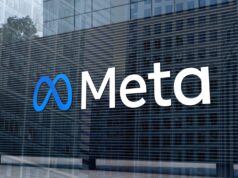
In recent years, artificial intelligence (AI) has emerged from the realms of science fiction to become a pivotal element of the global economy. As we step into 2024, the integration of AI into various sectors promises unprecedented efficiency and innovation but also poses significant challenges that could reshape the workforce and widen economic disparities.
The Workforce Transformation
AI is on the brink of transforming the global labor market, with the International Monetary Fund (IMF) reporting that almost 40 percent of global employment is vulnerable to being replaced or altered by AI technologies. Advanced economies are at a higher risk, with about 60 percent of jobs likely to be affected. However, it’s not all doom and gloom, as roughly half of these jobs could benefit from AI integration, boosting productivity. The catch? The remaining half might see AI taking over key tasks, potentially leading to job losses, lower wages, and reduced hiring.
Emerging markets and developing economies face a different scenario, with a lower immediate disruption risk due to AI. However, their lack of infrastructure and skilled workforces to harness AI’s benefits raises concerns about worsening inequality among nations. Moreover, AI could exacerbate income and wealth inequality within countries, benefiting high-income workers and capital owners at the expense of lower-income groups.
Economic Growth vs. Socio-economic Divide
AI’s potential to drive economic growth is immense, with McKinsey’s research indicating that AI could significantly boost productivity through labor automation, innovation, and new competition. However, the adoption of AI could widen gaps among countries, companies, and workers, reinforcing the current digital divide and potentially leading to uneven benefits across the global economy.
For instance, countries that are leaders in AI adoption could see substantial economic benefits, capturing an additional 20 to 25 percent in net economic benefits compared to today, while developing countries might only see a 5 to 15 percent increase. This uneven distribution could stoke social tensions and necessitate proactive measures by policymakers to ensure a more inclusive AI transition.
The Role of Generative AI
Generative AI, particularly, holds vast potential for innovation across industries, from retail to high tech and banking. McKinsey estimates generative AI could generate $2.6 trillion to $4.4 trillion in value across various sectors. In the retail industry alone, generative AI could contribute roughly $310 billion in additional value by enhancing marketing and customer interactions. This highlights the transformative power of AI in creating new revenue streams and improving operational efficiencies.
Strategic Reskilling as a Countermeasure
The sweeping changes brought about by AI underscore the critical need for strategic reskilling to maintain economic growth and job market stability. A joint study by Cognizant and Oxford Economics predicts that generative AI will affect 90% of U.S. jobs in some way, emphasizing the importance of adapting to new ways of working to leverage AI’s potential fully. The study projects that AI could boost U.S. productivity by 1.7-3.5% and grow the U.S. GDP by $477 billion to $1 trillion over the next decade, based on business adoption rates. However, it also warns that half of all jobs could significantly change, with around 9% of the current U.S. workforce potentially facing job displacement.
As AI continues to evolve, its impact on the global economy and labor market will be profound and multifaceted. While AI offers the promise of increased productivity and economic growth, it also presents significant challenges, including potential job losses and increased socio-economic inequalities. The dual nature of AI’s economic revolution calls for a balanced approach, with governments, industries, and individuals working together to harness AI’s benefits while mitigating its risks.










